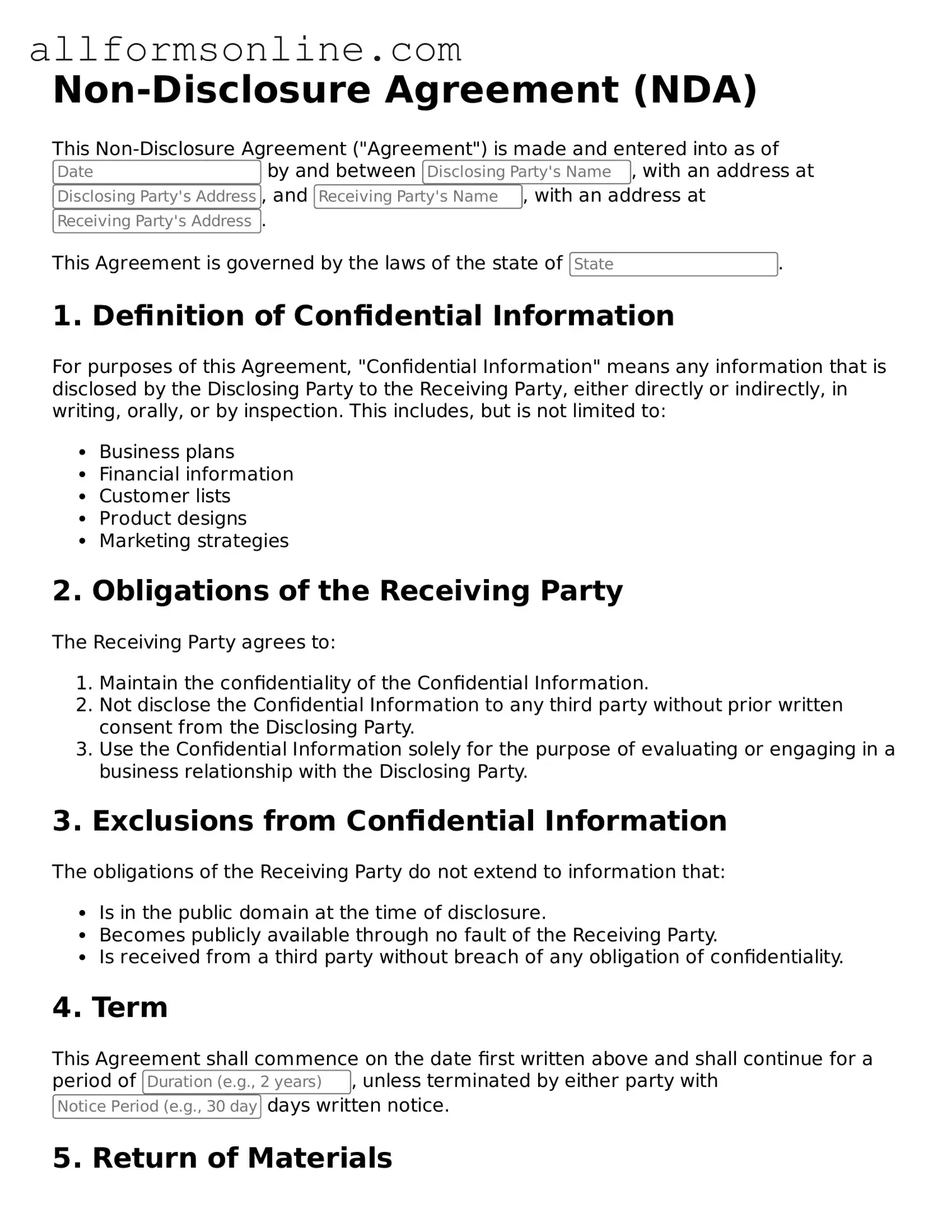What is a Non-disclosure Agreement (NDA)?
A Non-disclosure Agreement (NDA) is a legal contract that establishes a confidential relationship between parties. It is designed to protect sensitive information from being disclosed to unauthorized individuals or entities. NDAs are commonly used in business settings to safeguard trade secrets, proprietary information, and other confidential data.
Why would someone need an NDA?
Individuals and businesses often require NDAs to protect their intellectual property and confidential information. This may include business plans, financial data, customer lists, or proprietary technology. By signing an NDA, parties can ensure that sensitive information remains private and is not used for competitive advantage.
Who can sign an NDA?
Any individual or entity can sign an NDA. This includes employees, contractors, business partners, and vendors. It is important for all parties involved in the sharing of confidential information to agree to the terms outlined in the NDA.
What should be included in an NDA?
An effective NDA typically includes the following elements: a definition of confidential information, the obligations of the receiving party, the duration of confidentiality, and any exclusions from confidentiality. It may also outline the consequences of a breach of the agreement.
How long does an NDA last?
The duration of an NDA can vary. Some agreements specify a fixed term, such as one to five years, while others may last indefinitely, especially for trade secrets. The duration should be clearly stated in the agreement to avoid confusion.
Can an NDA be enforced?
Yes, an NDA can be enforced in a court of law. If a party breaches the terms of the agreement, the injured party may seek legal remedies, which can include monetary damages or injunctive relief. The enforceability of an NDA depends on its terms and the applicable laws in the jurisdiction.
What happens if someone breaches an NDA?
If a breach occurs, the affected party may take legal action against the breaching party. This can involve seeking compensation for any damages incurred or requesting a court order to prevent further disclosure of the confidential information.
Are there different types of NDAs?
Yes, there are two primary types of NDAs: unilateral and mutual. A unilateral NDA involves one party disclosing information to another, while a mutual NDA involves both parties sharing confidential information. The choice between the two depends on the nature of the relationship and the information being exchanged.
Can an NDA be modified after it is signed?
Yes, an NDA can be modified if both parties agree to the changes. It is essential to document any amendments in writing and have both parties sign the revised agreement to ensure clarity and enforceability.
Is it necessary to have a lawyer review an NDA?
While it is not strictly necessary, having a lawyer review an NDA is highly recommended. A legal professional can ensure that the agreement is comprehensive, enforceable, and tailored to the specific needs of the parties involved.
